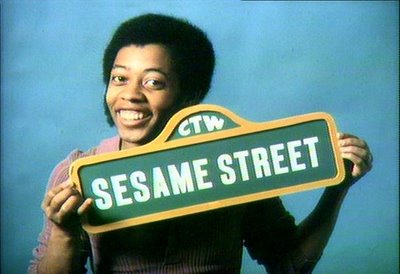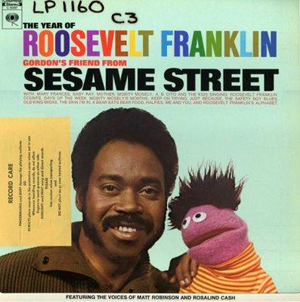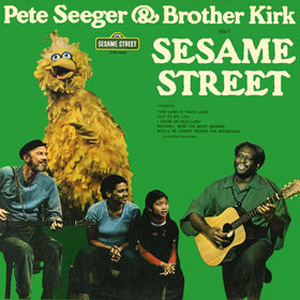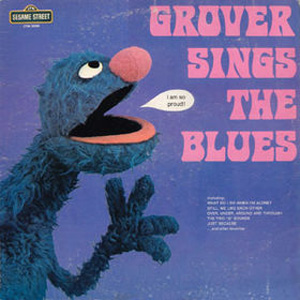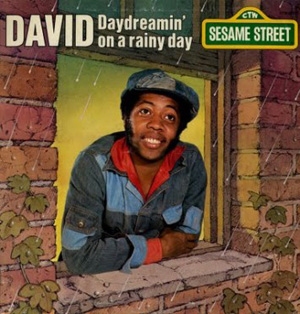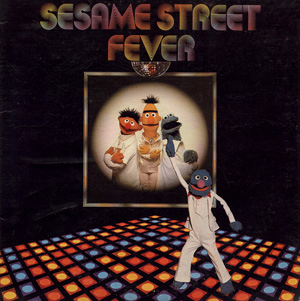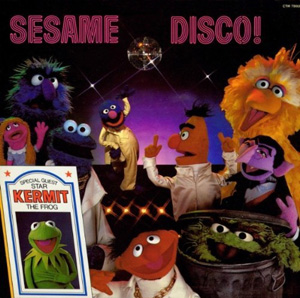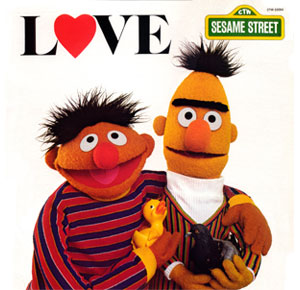Crazy & Cool: Sesame Street Albums
|
Sesame Street is a globally famous kids TV show, being shown regularly in some 140 countries, with almost 5000 episodes being produced since it first started back in 1969. A mixture of skits, songs, animation and short films, designed to entertain and educate children. Some of the songs that Sesame Street has produced over the years, are still stuck in the heads of adults who watched the show as kids. All you have to say is, "1, 2, 3, 4, 5..." And off people will go, counting to 12, to the tune from Sesame Street. Everyone has their memories of the show, their favourite moment from the show, song, guest appearance, and Sesame Street character. Both human and Muppet. Throughout its life, Sesame Street has released a huge amount of albums. Many of which in the spirit of the show's mission to celebrate the culture and diversity of America, turned out to be some quirky classics.
|
|
The Year Of Roosevelt Franklin (1971): Also released as My Name Is Roosevelt Franklin in 1974. Roosevelt was a Muppet character, from the early 1970s. Sesame Street cast member Matt Robinson, who also played Gordon, provided Roosevelt Franklin's voice. He saw the character as a way to discuss issues of race and prejudice on the show. The African-American rhyming and scatting purple Muppet with spiky black hair and a red and yellow striped turtleneck brought some much needed funk to Sesame Street. His album was an equally funky affair, with songs that subtly covered race issues, such as "The Skin I'm In", and diversity in "A Bear Eats Bear Food". The whole album is a cool mix of funk, blues and R&B. One of my favourite track is bluesy "The Safety Boy Blues". Unfortunately Roosevelt was taken off Sesame Street, after parents wrote to the Children's Television Workshop to complain that Roosevelt was a negative stereotype of African-American children, citing his rowdy nature and the fact that his classes closely resembled after-school detention.
|
|
Pete Seeger & Brother Kirk Visit Sesame Street (1974): Was the first album on the Sesame Street Records label to consist of entirely new material, not previously featured on the show. It features folk singers Pete Seeger and Reverend Frederick Douglass Kirkpatrick (Brother Kirk), singing a mixture of traditional and contemporary folk songs with Big Bird, Oscar the Grouch and the Kids. Some of the songs featured carried a political message, such as "This Land Is Your Land" the popular American folk song originally written and recorded by Woody Guthrie. And the song about the African-American Civil Rights Movement, "The Ballad of Martin Luther King". Also featured was the popular Cuban song "Guantanamera". Seeger's arrangement of was a 1966 hit for The Sandpipers. There's also a cover of Woody Guthrie's Riding In My Car, which Seeger treated as a comment on the disintegration of railways, as heard on his 1962 live album, Children's Concert At Town Hall. With the talents of both Seeger and Brother Kirk, the album is a great example of American folk. Irrespective of its connection to Sesame Street.
|
|
Grover Sings The Blues (1974): Voiced by future Hollywood big-hitter, Frank Oz, Grover has always been a popular character of Sesame Street. And in 1974 he got a whole album of his own. Musically speaking, there really isn't a blues number on the record. "I Am Blue" comes closest with its spare piano accompaniment, suggesting Ella Fitzgerald if she were blue, furry and desperately sad. The album seems largely the work of Joe Raposo, who is credited as producer and musical director. In the latter capacity, he came up with the best numbers, such as "Has Anybody Seen My Dog?", a brilliantly enjoyable song that would make any listener's short list of Sesame Street greatest hits. The rest of the album is pretty much typical Sesame Street fair. I do personally love the last track on the album "Near And Far", which is lifted straight from the Grover's skit on Sesame Street about explaining the concepts of near and far. One of those many Sesame Street moments that inexplicably sticks in my head. Many of the other tracks on the album listeners will remember from the TV shows.
|
|
David: Daydreamin' On A Rainy Day (1978): A solo album from Northern Calloway's character David. The concept of the album is that David is bored on a rainy day, so he starts singing as a way to pass the time. He goes through his toys to find ways to play and imagine indoors. Calloway wrote and produced the album, along with Gavin Spencer. It would appear that Calloway had a great time making the album, as the songs jump from from 60s and 70s pop kitsch, to funk and the awesome "Rubberband Band", in which Calloway channels his inner Elton John. Really, he does, look it up on YouTube. Then there's the possibly Star Wars inspired space funk track "Space Cadet". Seriously this is one whacked-out album. Sadly Northern Calloway died in 1990, under mysterious circumstances. The last decade of his life was filled with mental illness, laws suits and one turn of bad luck after another. His legacy however is laid-down in the vinyl of this album, and the childhood memories of millions who will always remember him as the happy mutton-chop bedecked David from Sesame Street.
|
|
Sesame Street Fever (1978): A disco-themed concept album. Yup, that's the best way to describe this. As the story of the album follows the characters as of disco fever sweeps Sesame Street. The album heavily parodies the 1977 smash hit movie Saturday Night Fever, with the cover featuring Grover where John Travolta should be, and Ernie, Bert, and Cookie Monster in the place of the Bee Gees. The album is mainly disco reinterpretations of classic Sesame Street songs, with two new songs, the title track "Sesame Street Fever" and "Trash". Robin Gibb from the Bee Gees appears as a guest vocalist on both new songs, and according to the album's liner notes, "appears courtesy of his children - Melissa and Spencer Gibb". In keeping with the disco-era theme, each track features an extended instrumental introduction, which meant that the album only contained 6 tracks in total. The album was nominated for a Grammy Award for Best Recording for Children, but lost to the first cast album from The Muppet Show. The album peaked at #75 on Billboard's Pop Albums Chart.
|
|
Sesame Disco! (1979): A follow-up album to the commercially successful Sesame Street Fever. Again it features the Sesame Street characters doing disco renditions of well known songs from the show, along with some new material. On every track the Sesame Street characters are backed up by a chorus of female singers, credited on the album as "the Girls". (Yvonne Lewis, Maeretha Stewart, and Ullanda McCullough.) The album features disco versions of two particular songs that have become much loved standards, beyond Sesame Street. The song "Sing", which is better known as the 1973 hit for The Carpenters, which started out as a Sesame Street song. And the well known Kermit the Frog song, "Bein' Green", sometimes referred to as "It's Not Easy Being Green", which he has sang numerous times on both Sesame Street, The Muppet Show and countless other TV shows. He has even done a duet of the song with the likes of Lena Horne, Julie Andrews and Ray Charles. Most recently in 2012, he performed the song with Ce Lo Green, on the TV talent show The Voice.
|
|
Love (1980): What can you say about the Sesame Street "Love" album? Love is comprised of songs by the various Sesame Street characters, singing about the people, places, and things that they like and love. This album was nominated for a Grammy Award for Best Recording for Children, but lost to In Harmony: A Sesame Street Record. The cover features apartment sharing odd couple Bert And Ernie. Who it has been rumoured for more years than I care to remember, could possibly be gay! Big shock! Gay puppets! However on this album, there is a track that plays with the myth. "Do You Like Me?", in which a needy and possessive Ernie browbeats Bert into admitting that he does have feelings of affection for him before begging his duck-loving pal to turn off the lights. The puppet stage musical for adults, Avenue Q, parodies this song with its own song "If You Were Gay". That little snippet aside, the album is a schmaltzy piece about getting along, liking each other and love. The ultimate Sesame Street message to kids everywhere.
|
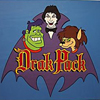
Top Five Saturday Morning Kids TV Shows Featuring Classic Horror Monsters - Vintage Saturday morning shows featuring an ensemble cast of classic horror and B-movie characters.
|
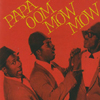
Papa-Oom-Mow-Mow, And The Word Being The Bird! - The true origins of the song Surfin' Bird. How two songs became one, and a bottle of fortified wine became a dance.
|

